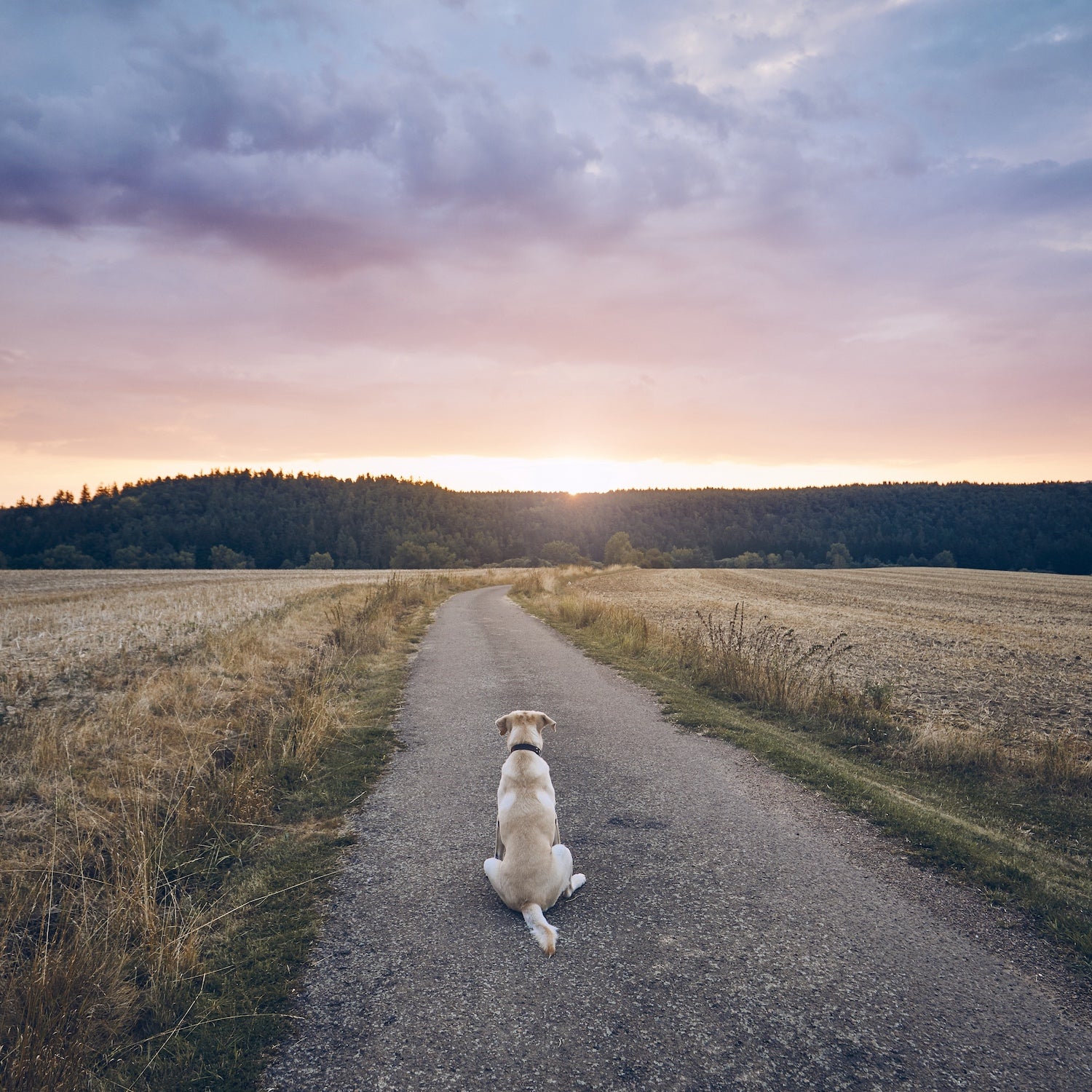It’s a pet owner’s worst nightmare: halfway through a hike, far from home, Rover bounds into the brush and doesn’t come back. Ten minutes pass, twenty, an hour—and it’s time to deal with the fact that your dog is good and lost. What to do next can be counterintuitive.
That’s where Seattle pet searcher James Branson comes in. For 13 years he’s used his dogs to find other animals, calling his operation (even though his finders now include a 13-pound white poodle and a gargantuan German Shepherd mix named Tino, short for Valentino Squishy Wordsworth). Branson modeled his techniques after those taught by Kat Albretcht, a former police officer and bloodhound handler turned dog detective; he saw her advertisement for training classes on a dog park bulletin board near Seattle, and signed up.
Today, he fields more than 800 calls a year from owners searching for their lost companions. Many are for in-town disappearances, but the hiking trails near Seattle are not an uncommon destination.
“When a dog is lost, it’s almost always the case that the human does the wrong thing,” says Branson. After thousands of searches and hundreds of successful finds, he’s figured out some tips and tricks to increase the odds of finding Rover.
Don’t Shout Their Name
Every owner of a lost pet ever has probably broken this rule, hollering after the dog whether they can be spotted in the distance or not. But hearing its name may only serve to drive a panicked pet farther away.
“It’s like when I was in second grade, and I didn’t want the teacher to call my name,” says Branson; a dog under stress doesn’t want attention focused on them. It may cause a confused animal to bolt or hide. In his experience, calling a dog’s name only helps a third of the time, but otherwise hurts the process.
Call Another Dog’s Name
A wayward pup may freak out at his own moniker, but hearing the name of a BFF? That works, says Branson. Calmly using the name of a dog sibling or playmate will help the lost one know where the humans are and, even better, hail them toward something familiar.
Branson notes that well-trained Tino would be unlikely to bolt from him—but if the bouncy 120-pounder did wander off, he’d call instead for Mu, his cat-detecting lab mix and Tino’s favorite friend. Even chatting at a normal volume can help project calm and let the lost dog find you.
Check the Trailhead
Your canine isn’t as goofy as she looks. Branson notes that about half the time, lost dogs on hiking trails are found back at the parking lot, even when it’s miles away. “Quite often, they’ll just hoof it back to the car,” he notes, which is also why physical tags with an owner’s name and contact information are important. Branson remembers a dog named Snow who was lost while he ran behind his owner’s mountain bike; Snow was found 28 days later and ten miles away from the trail, sleeping on somebody’s porch—reunited only because the pup was wearing his owner’s phone number.
(Oh, and if someone suggests you for your lost pet? Branson has never, ever seen evidence that does anything.)
Lose Your Shirt
When an owner needs to pause their search, leaving a piece of clothing at the place last seen can give a lost animal a spot to return to. It’ll smell familiar and the pet may simply curl up on the sweatshirt left behind. However, Branson doesn’t recommend strewing your entire dirty clothes hamper around the forest, as he’s seen before. “Just, like, a pair of socks,” he says.
If pets are spotted but not caught Branson uses calming signals, a series of behaviors and facial expressions that project comfort and security. He’ll sit on the ground for hours at a time, avoiding eye contact, and let the dogs come to him.
Hire an Expert
�����������’s lists 34 pet finders across the United States who may be able to help if you ever lose your dog.
But Branson notes that searches in the wilderness have their limits; he can’t let Tino follow his nose through terrain he himself can’t handle. And since his search dogs can’t work for more than a few hours at a time, even reaching the place last seen can eat up a lot of his time.
Still, his dogs find their intended target about 25 percent of the time. His first detecting dog, Kelsey, made about 100 finds. And success comes in many forms: Tino’s first victory, in 2018, was tracking a deaf 150-pound Great Pyrenees named Puppy. Tino circled Branson back to a long ditch a few times before he spotted Puppy’s white head, most of his body mired in a mud hole.
One caveat: Branson warns against hiring any outfit that guarantees success, or whose fees feel extravagant. “There’s no regulation” for what he does, he says. He charges about $300 for a single outing of several hours, but has seen rates in the thousands.
Branson, unsurprisingly, advocates for universal leash use on trails, though he does understand that some owners will let their dogs run free. But he says that what owners do can make or break the outcome of a lost animal. “I wish I knew what they were thinking,” says Branson of the lost pets he tracks. “But I do know all the psychology of the humans that interact with them.”


